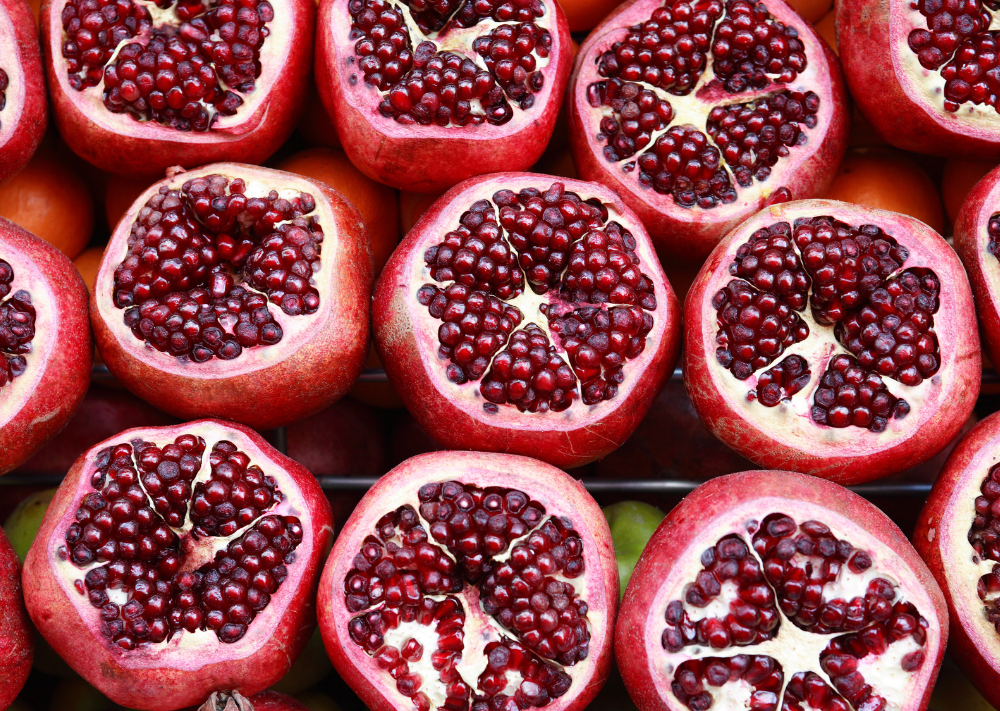One year review: Embracing new ways to evaluate the risks of yearling endoscopy

 EMERGING INDUSTRIES / Monday, 5 December 2022
EMERGING INDUSTRIES / Monday, 5 December 2022 
A $10.4 million industry in its infancy, the potential of pomegranates is largely untapped.
While small-scale commercial pomegranate production kicked off in Australia in the early 2000s, the Australian Pomegranate Industry Strategic Plan 2021-2026 points to the key opportunities for growth.
One family running a commercial pomegranate business in South Australia’s Riverland shares the excitement about the potential for the industry but thinks a lack of awareness and investment into innovative capabilities for pomegranate production poses a barrier.
“There’s a lot of cultural groups that drive the demand for pomegranates but there still needs to be more education for the general public so they stop thinking it’s just something pretty in a salad,” said Jane Wilson of RivPom.
“There are so many recognised health benefits such as anti-inflammatory, antioxidant and anti-aging properties,” she said.
While human trials on pomegranate-based pharmaceutical products are expensive and therefore limited, research has indicated that pomegranates contain up to three times more antioxidants than green tea or red wine which can help to prevent diseases such as cancer and reduce inflammation and the effects of ageing.
“The problem is we don’t have the facilities in Australia to cut open a pomegranate and dry the seeds which is required to use them in a pharmaceutical capacity because the cost of electricity and labour is really expensive here,”
The pharmaceutical and medicinal opportunities are too great to ignore with the potential for pomegranate to be used in the prevention and treatment of several types of cancer, cardiovascular disease, osteoarthritis, rheumatoid arthritis, improving wound healing and providing benefits to the reproductive system.
The strategic plan for the industry proposes programs around market development and technology adoption that would build the capacity for Australian growers to capitalise on these opportunities.
The Australian Pomegranate Industry Strategic Plan 2021-2026 outlines eight research and development project themes that could greatly benefit the growth of the industry, including different end-use opportunities for Australian pomegranates.
“The strategic plan has been a crucial first step to better understand the potential of the industry, production opportunities, and research priorities to help it grow,” said AgriFutures Australia’s General Manager of Business Development Michael Beer.
“A key part of the plan is the research, development and extension priorities over a five-year time horizon,” he said.
While the economic assessment found that all proposed activities showed a positive return on investment, the top three most impactful activities to promote industry growth were identified as the development of a best practice guide for growing pomegranates in Australia, completing agronomic research to improve pomegranate production and building the capacity of the pomegranate industry through variety trials and market research.
“This analysis will be used by industry, AgriFutures Australia, and investors to better understand the potential impact of investments and help prioritise research activities,” said Mr Beer.
According to Mrs Wilson, further research and development into growth opportunities for the industry couldn’t come at a better time.
“Demand is growing but it’s just really hard at the moment to keep up while we’re dealing with the rising cost of transport and input costs,” she said, citing a 500pc increase on some chemical costs.
The projects outlined in the strategic plan all work to find new and improved ways to capitalise on demand for pomegranates, something that Mrs Wilson believes is crucially important in light of Australia’s current economic climate.
“With the rising cost of living, the average Australian probably views the pomegranate as a more luxury piece of fruit,” said Mrs Wilson.
“There is so much potential and it is an investment opportunity to explore ways for the industry to capitalise on other end-use opportunities such as arils, juice, molasses, sparkling wine, stockfeed and nutraceuticals,” she said.
Despite the local and global challenges facing Australia’s pomegranate industry, the AgriFutures Emerging Industries program has identified two or three sweet-spots that have the potential to foster even more industry growth and provide a sustainable future for growers and stakeholders.
For more information visit AgriFutures Emerging Industries Program.
 THOROUGHBRED HORSES / 05.12.22
THOROUGHBRED HORSES / 05.12.22  WORKFORCE AND LEADERSHIP / 05.12.22
WORKFORCE AND LEADERSHIP / 05.12.22  HONEY BEE & POLLINATION / 05.12.22
HONEY BEE & POLLINATION / 05.12.22